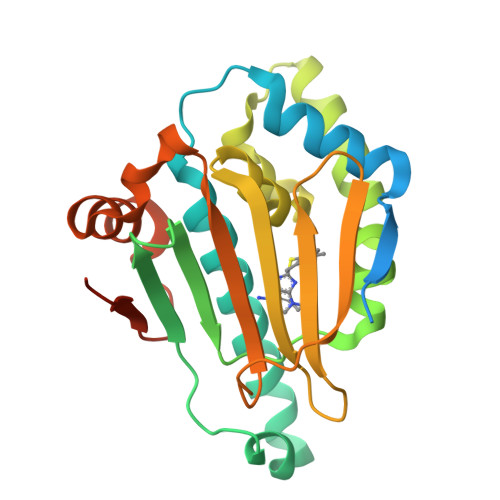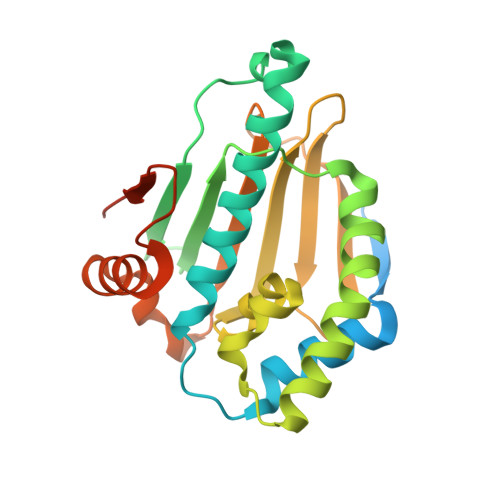Paralog-selective Hsp90 inhibitors define tumor-specific regulation of HER2.
Patel, P.D., Yan, P., Seidler, P.M., Patel, H.J., Sun, W., Yang, C., Que, N.S., Taldone, T., Finotti, P., Stephani, R.A., Gewirth, D.T., Chiosis, G.(2013) Nat Chem Biol 9: 677-684
- PubMed: 23995768
- DOI: https://doi.org/10.1038/nchembio.1335
- Primary Citation of Related Structures:
3O0I, 3O2F - PubMed Abstract:
Although the Hsp90 chaperone family, comprised in humans of four paralogs, Hsp90α, Hsp90β, Grp94 and Trap-1, has important roles in malignancy, the contribution of each paralog to the cancer phenotype is poorly understood. This is in large part because reagents to study paralog-specific functions in cancer cells have been unavailable. Here we combine compound library screening with structural and computational analyses to identify purine-based chemical tools that are specific for Hsp90 paralogs. We show that Grp94 selectivity is due to the insertion of these compounds into a new allosteric pocket. We use these tools to demonstrate that cancer cells use individual Hsp90 paralogs to regulate a client protein in a tumor-specific manner and in response to proteome alterations. Finally, we provide new mechanistic evidence explaining why selective Grp94 inhibition is particularly efficacious in certain breast cancers.
Organizational Affiliation:
1] Molecular Pharmacology and Chemistry Program, Sloan-Kettering Institute, New York, New York, USA. [2] Department of Pharmaceutical Sciences, College of Pharmacy and Allied Health Professions, St. John's University, Jamaica, New York, USA. [3].



















